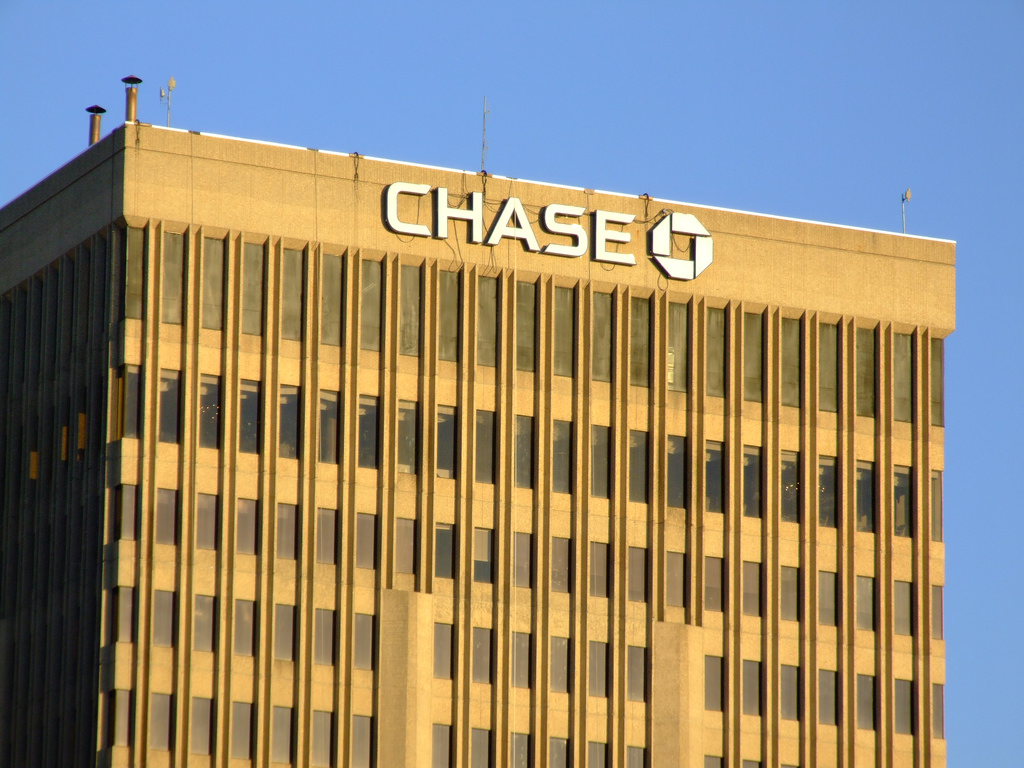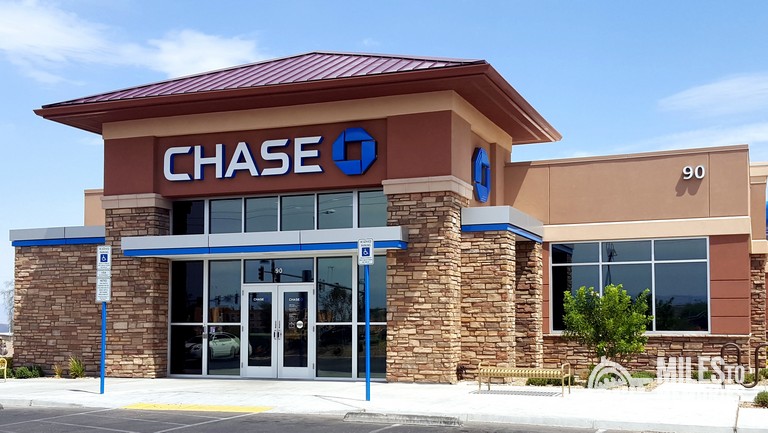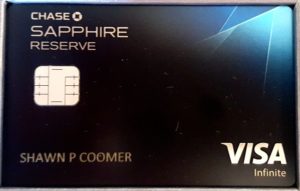
Chase Sapphire Preferred vs Sapphire Reserve
Now that we know the full details of the new Chase Sapphire Reserve card, it is time to really look at which cards within the Ultimate Rewards ecosystem it makes sense to keep and spend on. Clearly the Sapphire Reserve is designed to be an upstream product to the Sapphire Preferred and thus I doubt many people will keep both. So the question then becomes which card is worth getting and which is worth keeping. Let’s take a look as we battle the Chase Sapphire Preferred vs Sapphire Reserve.
Note: Chase has been known to be strict on approvals for people who have opened up 5 or more cards in the past 24 months. (The so called 5/24 rule.) This rule often applies to the Sapphire Preferred. We do not yet know how it will apply to the Sapphire Reserve.
Bonus
- Chase Sapphire Preferred: 50,000 Ultimate Rewards after $4K spend + 5K for adding an authorized user.
- Chase Sapphire Reserve: 100,000 Ultimate Rewards after $4K spend.
Winner: Chase Sapphire Reserve – With double the bonus and the same manageable amount of spend required, the Sapphire Reserve ups the ante with an amazingly valuable bonus.
Earnings
- Chase Sapphire Preferred: 2X Dining & Travel
- Chase Sapphire Reserve: 3X Dining & Travel
Winner: Chase Sapphire Reserve – The winner here is clear. Chase has taken the same bonus categories and made the Sapphire Reserve superior in every way.
Benefits
- Chase Sapphire Preferred: Primary CDW on rentals, Trip insurance, no foreign transaction fees, 1:1 points transfer, points worth 1.25 cents towards travel.
- Chase Sapphire Reserve: Primary CDW on rentals, Trip insurance, no foreign transaction fees, Priority Pass Select lounge access, 1:1 points transfer, special auto rental discounts, $100 Global Entry credit, points worth 1.5 cents towards travel.
Winner: Chase Sapphire Reserve – Once again the Sapphire Reserve is stacked against the Sapphire Preferred. It has all of the same benefits and then many many more. Next we’ll tackle value.
First Year Value
- Chase Sapphire Preferred: $95 annual fee (waived the first year.)
- Chase Sapphire Reserve: $450 annual fee (not waived) + $300 in travel credit each calendar year.
If we assign a value of 1.5 cents each to Ultimate Rewards points and assume you can get the travel credit twice in your first year with the Sapphire Reserve, then here is your first year value with either card.
- Sapphire Preferred: $750 (50K * .015)
- Sapphire Reserve: $1,650 ($1,500 – $450 + $600)
Winner: Chase Sapphire Reserve – Not even factoring in the increased benefits or earnings, the Chase Sapphire Reserve has a far better first year value than the Sapphire Preferred. Given that it also gives you things like lounge access, it is potentially worth much more.
Long Term Value
Let’s assume now that you want to keep one of these cards for the long term. Which provides the better value?
- Chase Sapphire Preferred: Annual Cost of $95
- Chase Sapphire Reserve: Annual cost of $450 – $300 travel credit
Winner: Depends, but Sapphire Reserve – If you travel enough to maximize the travel credit, then you should look at the annual fees as $150 vs. $95. In that case I think the increased points value, 3X earnings, lounge access and other benefits of Sapphire Reserve clearly make it the superior choice. If you aren’t a big traveler and cannot maximize that credit, then you probably shouldn’t have either of these cards, but the Sapphire Preferred might be the best of the two.
Conclusion
Overall, in the comparison of the Chase Sapphire Preferred vs Sapphire Reserve, the latter is a better card in just about every way. It comes with a fairly rich feature set, generous 3X earnings and an amazing travel credit which puts its true cost almost in line with the Sapphire Preferred. For years we have been searching for the product that will be the “Sapphire Preferred Killer”. I think we have found it.





[…] Detailed comparison of the Chase Sapphire Reserve and Chase Sapphire Preferred. […]
[…] Related: Chase Sapphire Preferred vs. Sapphire Reserve: Which Card to Get & Which to Keep […]
[…] Chase Sapphire Preferred vs. Sapphire Reserve: Which Card to Get & Which to Keep […]
Freedom and Freedom Unlimited cards are getting a nice value boost as well, assuming you spend UR points to cover revenue travel tickets.
Freedom 5% cashback categories -> Transferred to Reserve (1.5 cent / point) produce effective cashback of 7.5%
Freedom Unlimited 1.5% – > x 1.5 Reserve Redemption -> 2.25% cashback.
Seems very generous. Am I miscalculating something?
No you are not. This card is seemingly the gift that keeps on giving.
If you can take advantage of the full $300 travel credit, you need to spend $3667 in the 3x categories to come out ahead vs the Sapphire Preferred at 1.5 cents per point. If you use points for an average of 2 cents each, that number drops to $2750.
Use this formula to figure out your break even point:
$55 / Average Redemption Value = 3x spending necessary
Of course this does not take into consideration UR points that you might spend at 1.5 cents each from other cards, but it gives you a fairly good idea if the Reserve is a good long term card for you vs the Preferred.
Not quite. You said $3667 spending required, but 3667 is the number of points you’d have to use to break even on the $55. Your formula however is accurate. If the 3667 is racked up via the 3x spending category, then technically you only have to spend $1222 to hit that target.
That said, in the first calendar year if it’s true that you’re able to use the $300 credit twice (once now in 2016 after signing up, and once again in 2017 before the renewal fee comes up), then technically the $450 fee is offset by the $600 credit received, by $150. This is enough to hold onto the CSR for 2 years and then requires you to spend $889 in the 3rd year ((150-55*2) / $0.015 reimbursement / 3x spending category) to be “break even” with the CSP card.
This doesn’t take into consideration the $100 global entry fee reimbursement (once every 5 years) or the lounge access you gain with the CSR card. You could argue that the global entry convenience isn’t worth it. I also haven’t seen the lounges that the CSR provides access to, but if they’re anything like the amex lounges which I have been inside (free food and drinks), then it’s arguably worth the extra $55 just for lounge access. And if you do enough traveling to make the CSP worth the $95 over a no annual fee card, it’s definitely something to consider.
I think he was making a direct comparison to the CSP card as it relates to holding the card each year and paying the AF. Since the CSP already earns 2x points on dining/travel the CSR is only giving you 1 additional point, hence the $3667 figure.
And the lounges you get with this card (Priority Pass) are not even close to the Amex lounges (Centurion). Plus if you already have the Amex Plat or Citi Prestige this card offers nothing new, Priority Pass are already included in those.
I was directly comparing to the CSP card also.
If you have the CSP and make zero purchases throughout the year, you have a $95 fee.
If you have the CSR and rack up 3667 points throughout the year, the AF works out to $450 – $300 (credit) – $55 (3667 points x 0.015 redemption value) = $95.
Those 3667 points are gained by making $1222 in the 3x category purchases.
Kind of a bummer about the priority pass though =/ Oh well.
Actually, nevermind I’m wrong. I was approaching it the wrong way.
Any idea of the cost for a additional authorized user and will they have any benefits? Also does the Priority Pass alow you to take a guest I to the lounge?
The authorized user card on the Sapphire Reserve is $75. Right now we don’t know which of the benefits it will have. We also don’t know the guest policy of the Priority Pass membership since this has not been confirmed by Chase.
You’ll have to back up considerably if you want your novice readers to understand why anyone would pay such a whopping annual fee for a credit card. Perhaps just a link to a site offering a rationale for the uninitiated would help. thanks.
Hi Patricia. This post was designed to be as basic as possible. The points are worth $.01 as cash or $.015 towards travel. That puts the bonus at a value of $1,000-$1,500. You also get a $300 travel credit each calendar year, meaning you get the credit twice in the first year you have the card. (One credit in 2016 and one in 2017 if you get it soon.) That alone justifies the cost and is explained in this and other posts about the subject. I certainly can provide better answers or links if you have a more specific question.
Thanks for reading.
Should also mention that when purchasing travel (eg air, hotel, car) with CSP, points are worth 1.25 ct (a 20% discount). Compare to CSR with points worth 1.5 ct (33% discount).
FYI Chase CS rep has told me that I have 6 mos after AF is posted, to close the card and get a full refund of the AF I paid (his is about my Ink Bold card).
That certainly hasn’t been their policy across the board. Very interesting.
Nevermind, I read that too fast and missed your Ink reference. Yes, with Ink cards only it is 180 days. Generally Chase personal cards are 60 days and some co-branded cards are 30 days. In other words it varies by product.
Calculating the effect of CSR’s higher point value for booking travel:
1) CSP: $400 x .8 = $320 or 32,000 points; vs
2) CSR: $400 x .67 = $268 or 26,800 points.
The difference: $52, or 5,200 pt. That $52 is almost the difference in AF starting with Year 2 ($55).
Translation: if you book at least $400 of travel with the CSR, you will save enough to almost cover the higher AF.
what is the strategy to go if currently owning CSP? can you straight up apply for CSR?
They are separate products as far as we know. You should be able to have both if you want, although I don’t know why you would want to. My personal strategy would be to downgrade the CSP to a Freedom or Freedom Unlimited and then apply for the CSR. I would wait though to see any 5/24 data points and other tidbits of info that come out when the app goes live.
Pretty clear choice, even with the additional $55 in annual fee (after $300 credit). BTW, nice new logo Shawn, you even have your wife and kids with you!
Thanks Henry! Glad you noticed that. 🙂
Don’t think my comment I posted earlier went through. I feel as if the CSR is a no brainer to get in this hobby. My point was that with the SPG-Marriott merger, we don’t know if those SPG points will get devalued and also if they will lose the ability to transfer to air partners. That said, this makes the Chase CSR that much more valuable with the ability to transfer points and collect them with a multiplier attached to them.
If I already have Chase SP (annual fee came due again a month or two ago), should I close it and get a pro-rate? Or see if they can just transfer?
If it is within 60 days they will refund the annual fee. Beyond that there is no prorate generally.
Chase had just recently posted the FA on my Ink Bold, so I sent a PM to Chase CS. They explained that I could close the cc up to 6 mos after the AF had posted, and get a full refund of the AF. I do take them at their word, plus I have hard-copy 🙂
I meant “AF”, not “FA”.
i have a CSP but no Freedom…can i apply for the CSR and then convert my CSP to another product? anyone know if a conversion to the Freedom is allowed, and if so, do i have an option to get the “old original” Freedom or only the Freedom Unlimited? are there any other products i can covert a CSP to? seems like a CSP-to-Freedom conversion is the move here given my setup.
Yes you can convert the CSP to either the Freedom or Freedom Unlimited. My wife and I have done this a couple of times in the past. The Freedom and FU are really only the two choices.
Shawn, do I need to do anything (or just wait a certain amount of time) for Chase to “recognize” that I now have a new UR-eligible account (CSR) before downgrading my CSP? the last thing i would want to happen is to lose my UR points. Thanks for your help.
Technically the downgraded account is still Ultimate Rewards, it just has the points locked in at a $.01 rate. When your new account comes online you can transfer your points to it and get the full value and benefits of the premium card.
If I were to downgrade my CSP to Freedom Unlimited, would my age of account remain? CSP is one of my oldest cards and I’d like to keep its history.
Excellent question, I have gone through a lot of cards this past 2 years. Well I called Chase about that and the rep said, “I don’t know I’m not a credit counselor.”‘
Since I am concerned about the age of my cards as well, I wanted to get the DiscoverIt and wanted to convert my old regular Discover card. Now this is interesting……………….
Well, to play it safe the rep says, let’s allocate $500.00 and keep the old card and then transfer the remaining credit line to the DiscoverIt travel card.
*** She didn’t even pull my credit, I do realize we’re talking no annual fee cards but just throwing it out there.
I’ve been told by Chase CS reps, that a Product Change should _not_ change your age of accounts. PC just changes the type of cc you have, eg from Sapphire to Freedom. Acct # stays the same; C-L stays the same.
HOWEVER — let me caveat this. I just pulled by credit report, and one card which underwent a PC actually has a newer Account Opened date, about when the PC happened. So…?
I’m hoping I can get this card, that the 5/24 rule won’t be in full effect immediately. I agree that this is a better “hold” card than CSP. Once I get this, I’m downgrading the CSP to a FU.
Crossing my fingers the 5/24 is overlooked when the app goes live on Sunday.
I hope to find out and get some data points before I try.
Is it for sure confirmed that this card will not get the visa infinite $100 travel credit on 2-5 passenger itins?
Unfortunately it has been confirmed that the $100 companion discount will not be a benefit of the Sapphire Reserve. I suppose they are trying to help the Ritz card stand out a bit more since it does have that benefit.